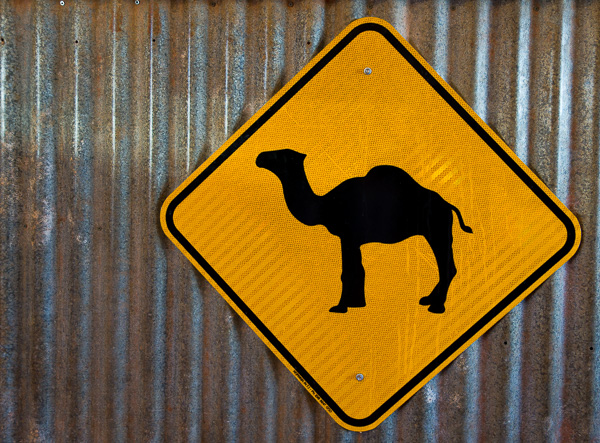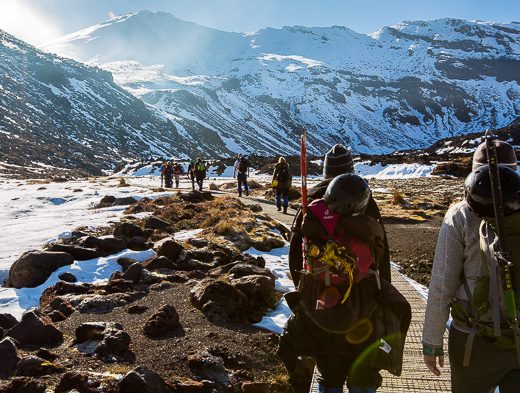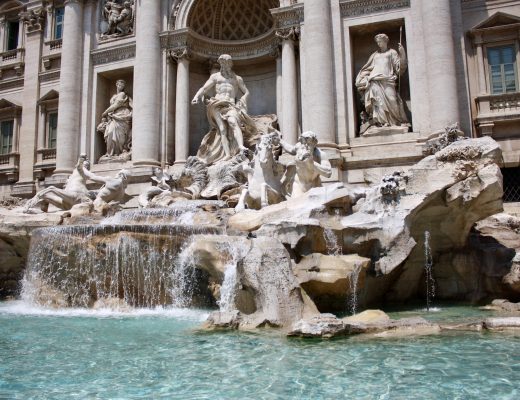Did you know Australia is home to hundreds of thousands of wild camels? We didn’t either, until we took the coolest tour while we were in Uluṟu-Kata Tjuṯa National Park.
I wouldn’t say riding a camel was ever high on our must-do list but after reading some reviews, we realized the Uluru Sunset Camel Tour was something we shouldn’t miss during our time in Australia’s Red Centre. Now, we’re hooked. It’s like extreme horseback riding, with a more adventurous beginning and end since the camels stand up and sit down in such a unique way.
We were picked up from our lodging ninety minutes before the sunset and whisked away to the camel farm just on the outskirts of Yulara. Our driver, Burt, also happened to also be our guide for the night.
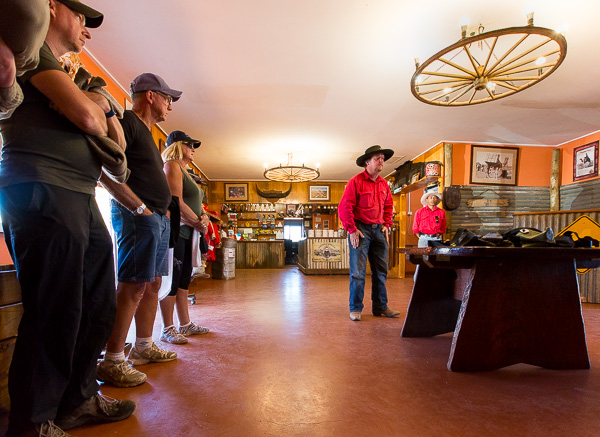
Burt, in the hat, is giving us the rundown of events for our camel tour.
Once at the camel farm we got a briefing about how the night was going to go, along with a brief history of the Uluru Camel Tours company. Then, it was time to see the camels for the first time.
When we walked out back, the camels were all lined up waiting for our arrival. The camels that were there are dromedary, one hump, camels. We were then assigned to our camels and learned how to mount the camel in a way that wouldn’t hurt our animal, or ourselves, and how to sit so the camels wouldn’t launch us off the seat when they stood up. Then, we started getting on our camels.
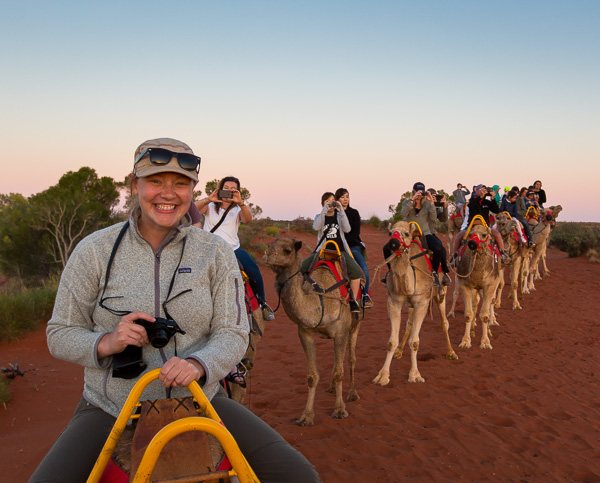
I don’t think I could be smiling any bigger.
Spinifix and Wally were our camels. Spinifix, named after a sharp porcupine-like grass which covers the outback, was mine, while Wally and Ben were paired up. Each had distinct personalities with Wally being a bit more stubborn and with a oral fixation that would stump Freud. Spinifix was very even tempered and, according to our guide, very quick. One of our favorite stories we heard about Spinifix and Wally was about a camel race they both competed in recently. Our tour guide Burt rode both Spinifix and Wally on that day for different races, and while Spinifix was the fastest and won several races, Wally got all the media attention. He did this by flat out refusing to leave the starting gate after the race had started. Burt finally convinced him to get moving, but he was in no hurry, and crossed the finish line minutes after the race had ended.
Thankfully during our jaunt, Spinifix didn’t turn on his jets, and Wally lazily complied with the slow saunter Burt established for our sunset tour. We were fortunate Wally was directly behind Burt on the lead camel, and Spinifix was third in line, so we could pick Burt’s brain about camaleering in Australia.
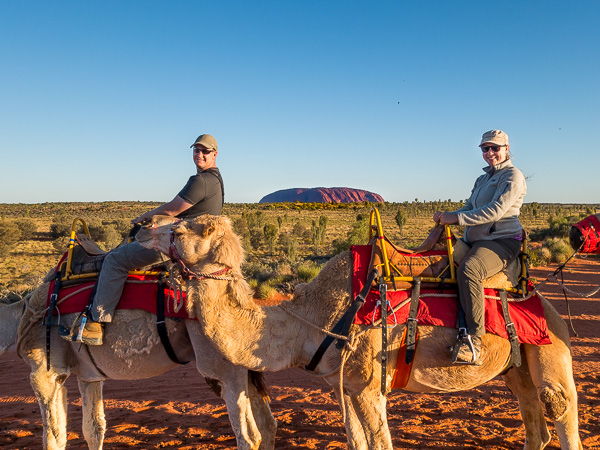
Poor Wally’s head was cut off in the photo.
Initially brought to Australia in the mid-1800s from the Middle East, camels are perfect for the climate of Australia’s Red Centre. They can eat 90 perfect of the plant life found in this inhospitable environment and can go long periods of time without water – an obviously important characteristic to surviving here. They were used to haul people and items from place to place and for heavy work in the outback, since each camel can haul between 300-600 kilograms (660 – 1,320 pounds). When engines came along they were no longer needed and several thousand camels were then released into the wild where they have continued to grow in numbers. While estimates vary, the number of feral camels found in Australia in recent years is likely around 750,000.
We had no idea.
We learned this and so much more while watching the sun set over Uluru on the back of a couple of these lumbering beasts.
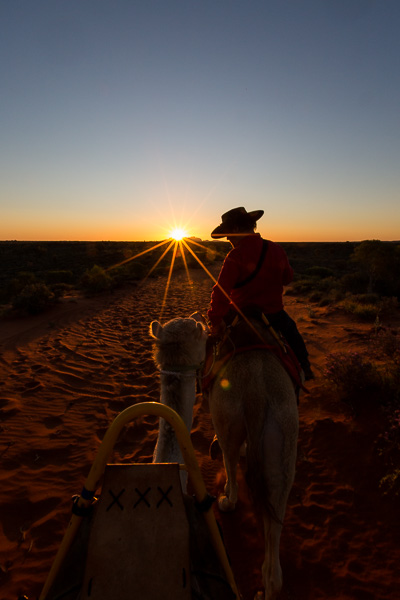
Burt undoubtedly taking something out of Wally’s mouth. Wally typically wears a muzzle since he loves to chew on everything, but since Burt was in front of Wally he removed the muzzle. I think about 30 minutes into the ride Burt might have been regretting his decision, since he spent the rest of the ride prying his water bottle, and other things, out of Wally’s mouth.
After our slow stroll, we headed back to the farm where we said goodbye to our faithful camels and indulged in the free food and drink that was provided. A wonderful way to watch a sunset. We will definitely be doing this again!
